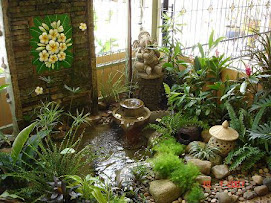Does Your Garden Have Style?
Author: Jude Wright
Does Your Home Garden Have a Style? You may be asking me "Style? For a garden? I just plant flowers." But, if you think about it, you can see that there really can be different styles for gardens.
A garden style can help you decide what kind of look you want for your garden as well as where to put your plantings.
How do you take style design into your gardening plans when you have so many practical matters to think about? You have garden size, whether the area is in sun or shade, its proximity to buildings, and how you will be using the space.
The solution is to treat is element of your garden as a part of a single design. The walls, garden furniture, even potted plants should all relate to the overall garden style. The most successful and beautiful gardens have started with a plan.
Let's take a look at some different garden styles:
You've probably heard of the cottage garden. This style is suggested by rambling roses, type of fencing (usually rock or stone walls) , stones for garden paths, ponds and other natural grasses and materials.
Some other garden styles can be classified as "national" styles. These garden styles can be Italian, Japanese, English, Spanish and American. American gardens are broken down further into southern, desert, southwest and others.
Many times, the style of a garden is determined by climate and location. Gardens located in Arizona, for instance, must be of a different style from those located in northern, colder climates. And plants in southern gardens with their lush greenery and overblown flowers won't live in either hot desert or cold snowy climates.
So, you can see that the style of your garden is closely tied to the climate conditions surrounding it.
Gardens can also be defined in style as formal or informal. For instance, a simple rose garden can look dramatically different when planted in a cottage garden style than when planted in a more formal geometric style.
When trying to decide on a style for your garden, first look at your geographical location. Then, think about what style you have in your home. Is it more casual or quite formal? This will give you a place to start for designing your garden.
Now, decide on how you will be using the space. Will you be having family barbecues or will you be doing more formal entertaining? Do you have children or pets that will need a lawn or enclosed area to play in?
Next, take a look at your trees and buildings. You will need adequate shade (or sun) for certain flowers and plants.
Once you have taken these matters into account, you can start your actual garden plan. Draw up a plan for your garden. Even a rough sketch of the space where your garden will be and where each element (such as flowers, foliage, stonework,or pond) will be can be a tremendous help in planting your beautiful new garden.
Now, all you have to do is plant it!
Rate this Article:
Article Tags: Gardening, Garden, Flower Garden, Garden Style
Article Source: http://www.articlesbase.com/


